Multicloud will be the enterprise default, that much is clear. The journey each enterprise will take to get there is less clear, but will be shaped by industry evolution, application heritages, SaaS choices, and strategic data attributes. Cloud industry leadership, too, will evolve as enterprises make strategic cloud choices in the aggregate. It’s not too late for tech industry incumbents, but IBM, Dell EMC, Cisco, Oracle, and HPE better get it right in 2020.
The cloud is entering a third stage of evolution. With it comes new challenges and opportunities for both users and vendors. What are they?
To best understand them, a quick scan of the evolution of cloud can set context. The first phase of cloud evolution combined advanced virtualization technologies, new classes of high-speed campus networking, and automation technologies capable of presenting complex machine product stacks as self-service offerings. Pay-as-you-go scalability catalyzed new types of digital native companies in software and media, dramatically altering entertainment and software development landscapes, among others. Amazon Web Services (AWS) was first to master the commercial potential of self-service computing services and became the go-to supplier of general-purpose cloud services to SaaS companies and enterprise web application developers.
The second phase of cloud evolution usurped traditional data center approaches to support big data applications. Many big data technologies, like Hadoop, were born in cloud companies, like Yahoo and Google, and then attempted a jump (via companies like Hortonworks and Cloudera) to data centers. But these workloads didn’t feature consistent, regular operations, instead featuring periods that required limited resources to periods that required significant resources. The rapidly evolving nature of big data technologies and scale-uncertain operations of analytics applications were tailor-fit to a cloud experience. Big data largely migrated to the cloud (along with other read-oriented applications like personal productivity), were recast as AI and machine-learning, and created new openings for Microsoft Azure and Google Cloud Platform (GCP).
Now we come to the third phase: The enterprise phase of cloud. Our research has consistently shown that 2019 would be the year that enterprises began establishing concrete longer-term cloud strategies, and that has proven to be the case. However, against the predictions (and wishes) of many cloud-first proponents, the core high-value transactional applications (HVTAs) that run enterprises and still capture significant spending are not migrating to the cloud in toto. Rather, enterprises are seeking a new path – a multicloud path – for their business’s core digital assets. Multicloud means a lot of things to a lot of players, but to enterprises it means cloud strategies that puts their businesses in control of their digital futures.
Very importantly, it also creates new opportunities for the technology industry’s incumbent elites: IBM, HPE, Cisco, Dell EMC, and Oracle. While each of these companies faces significant strategic mobility barriers due to cloud, the emergence of their longstanding enterprise customers – each of which has established mature technology sourcing, implementation, management practices, and installed bases of equipment and software – as a force in shaping cloud futures will bend the evolution of cloud toward competitive domains that are more familiar to the incumbents.
How will the enterprise phase of cloud evolve? From the first two phases, a few simple rules for cloud emerged that largely will determine the shape of the next phase of cloud. They are:
- The enterprise customer is still king. The self-service nature of successful cloud companies seduced many into believing that the social graphs connected enterprises to technology firms would disappear. Nothing could be further from the truth. IT is not dead; enterprise sales forces are not worthless; and the technology market still matters – a lot!
- Enterprise cloud topologies follow the data. The movement of big data to the cloud suggested a general movement of data to the cloud, but as new edge and core sources of data emerge, their data tends to remain in place and cloud services are moving to the core and edge.
- Cloud is networks. Increasingly distributed data means increasingly distributed computing. While new processor and storage technologies will be critically important to the evolution of cloud, networking technologies – at all scales – are the key constraints shaping enterprise cloud strategies.
- Services beats products. The genius of AWS was inventing a general-purpose approach to presenting general-purpose computing as a service. That is the new sourcing model for enterprise computing, full stop. The simple truth is this: If a vendor can’t present complex computing products as services, it’s hard to call it even a follower in cloud computing, let alone a leader.
The Enterprise Customer Is Still King
The operational discipline and automation on view at AWS, Google, Azure, and other leading suppliers of cloud-based services is unprecedented in any industry. Consequently, these companies have achieved remarkable scale and efficiencies that is transforming computing. During the first two phases of cloud evolution, these efficiencies translated into lower transaction costs for developers and data analytics professionals, revolutionizing how these two groups worked, and largely cutting out traditional IT.
The enterprise phase will build on the cloud experience catalyzed over the last decade, but with a twist: homogenous operations of cloud vendors increasingly will have to serve heterogeneous enterprise consumption. Enterprises are clear: They expect cloud companies to come to them. Enterprises will not underwrite all costs associated with transforming their application portfolios to fit into cloud vendor offerings. As a result, all cloud players are adding a real enterprise sales and support presence (e.g., GCP), multicloud options (e.g., AWS Outpost), and security profiles that presume integration of data across cloud platforms (e.g., all suppliers). In the enterprise phase of cloud, the cloud experience is being complemented by engagement models and technology options specifically established to accommodate the richness and diversity of enterprise computing as incumbent enterprises evolve digital capabilities.
Strong service, sales, and enterprise-class marketing may not be a full counterweight to the technology advantages of cloud suppliers, but they do provide traditional technology companies with a competitive opening in the enterprise phase of cloud evolution.
Enterprise Cloud Topologies Follow the Data
What is shaping the specific types of cloud capabilities demanded by different enterprises? The role that data plays within their businesses. Wikibon has long argued that the difference between a business and a digital business is that a digital business treats data as an asset. That seems inarguable today. Businesses are using data to improve customer engagement, institutionalize work differently, and alter operating models to increase profitability and strategic options. Moreover, enterprises are beginning to discuss data value in boardrooms, if only because data security and privacy concerns are on the rise due to factors like ransomware and GDPR. Indeed, Wikibon believes that all businesses with a digital footprint will have to invest to establish world-class strategic data protection and assurance that can sustain and restore data asset value wherever that data resides.
What Wikibon does not recommend, though, is a data asset strategy that presumes all data moves to public cloud vendors. Rather, we recommend a “data-in-place” strategy that presumes that most data will be distributed – stored and processed proximate to where it is generated and utilized. Thus, the explosion in data volumes currently underway won’t lead to a comparable explosion in data-under-management at public cloud companies. Our research suggests that 80-95% of data will remain at the edge or core. Huge data volumes will make it to centralized cloud vendors – especially for the purposes of data analytics and AI-class modeling and engine-building – but the vast majority of data will have comparably short lifecycles: generated, applied to inference engines, and discarded if no action is necessary.
Instead of moving data to the public cloud, the cloud experience will move the cloud to the data (see Figure 1). Just as the need for enterprise-style engagement models creates opportunities for incumbent technology companies, so too does the movement of the cloud experience into the core and out to the edge. Technologies like serverless computing are a beginning, but all large technology providers are putting offering roadmaps in place that increase the cloud affinity of their technologies and products, including Oracle, HPE, Dell Technology, IBM, and Cisco.
High-value traditional applications (HVTAs), the apps that run business operations, will be a pivot point for many enterprise multicloud strategies. Enterprises want options to appropriately integrate HVTAs, SaaS, and home-grown cloud-native applications. Our conversations with IT leaders strongly suggest that most enterprises will not force their HVTAs to the cloud by rewriting them. We believe they’ll choose one of four paths for their HVTAs to the cloud, each more or less appropriate for different classes of workloads and the enterprise’s determination of their multicloud operating model.
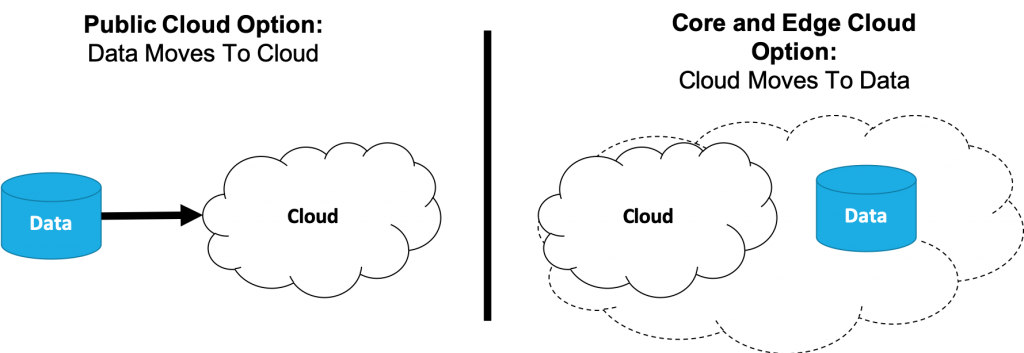
Figure 1: Enterprise Cloud Preference Is To Move Cloud Services To The Data
Cloud is Networks
Data will be more distributed, but digital businesses strive to create options on leveraging data that requires integrating data and application services in novel ways. As the cloud experience moves to the core and edge, a true distributed computing fabric is emerging. Wikibon’s hybrid cloud taxonomy identifies three distributed computing planes that will be essential (see Figure 2): a network plane for programmable binding of networked resources (including devices, identities, service and data) based on declarative intents, a data services plane for securing and optimizing the costs of complex enterprise data flows, and a control plane for acquiring, managing, and retiring cloud resources.
None of the three multicloud computing planes are completely defined, let alone established. This will be an area of significant invention over the next few years as multiple types of vendors seek to establish leadership in each plane, including public cloud vendors (e.g., AWS, Azure, GCP), cloud software vendors (e.g., VMware, Red Hat, Nutanix, Oracle), enterprise device vendors (e.g., Dell Technologies, IBM, HPE, Oracle), and – depending partly on the outcome of net neutrality legislation – telecommunications companies.
However, the distributed nature of cloud means that cloud and networking will coevolve. In other words, the enterprise potential of cloud will be strongly shaped by advances in programmable networking technologies. This is true at all scales. For example, given the slowdown of semiconductor-based technology improvements, much of the focus on increasing system performance is turning to increasing parallelism within systems. NVMe-oF is, at bottom, a powerful intra-system networking technology that, when coupled with technologies like flash-based SSD and storage-class memory (SCM) can reduce internal system data latencies by 90% or more. That will translate directly into richer, more reliable, and more predictable workloads.
At an intersystem, API-based scale, rich networking technologies are advancing options for software-defined segmentation by class-of-service, security, or other workload or identity options within enterprises. Service meshes, like Istio and Conduit, promise exciting advances (when coupled with microservice orchestrators like Kubernetes) for explicit Layer 5 and above operations and management. Our expectation is that data will emerge as a primary citizen in segmentation schemes, which will be the basis for advances in the data plane, creating opportunities to invent and exploit “intent-based” data structures and services that will support new classes of digital twin modeling, AI machines, and automation systems.
At an even greater scale – the internet-computing scale – digital businesses perimeters will effectively spread to include potentially any data, any service, anywhere, at any time, and any user. At this scale, which absolutely will be multicloud, we expect an increased convergence of control requirements across networking, security, data, and sourcing domains. Already, leading enterprises are beginning to converge network operation center and security operation center capabilities. We expect other disciplines will be added to that mix as software-defined resources technology, DevOps processes, automation, and evidence-based management practices evolve. We foresee the emergence of a “multicloud operations center” from a robust control plan that increasingly can be set up by IT and administered by IT and business professionals to run digital business operations.
This vision won’t be realized by a single cloud provider but will instead require invention by all technology and service companies dependent on networking advances. However, companies that provide rubber-meets-the-road networking technologies will be especially important. From startups like Apstra to incumbents like Cisco, the business and development priorities in place today will be crucial to shaping the near- and long-term future of multicloud.
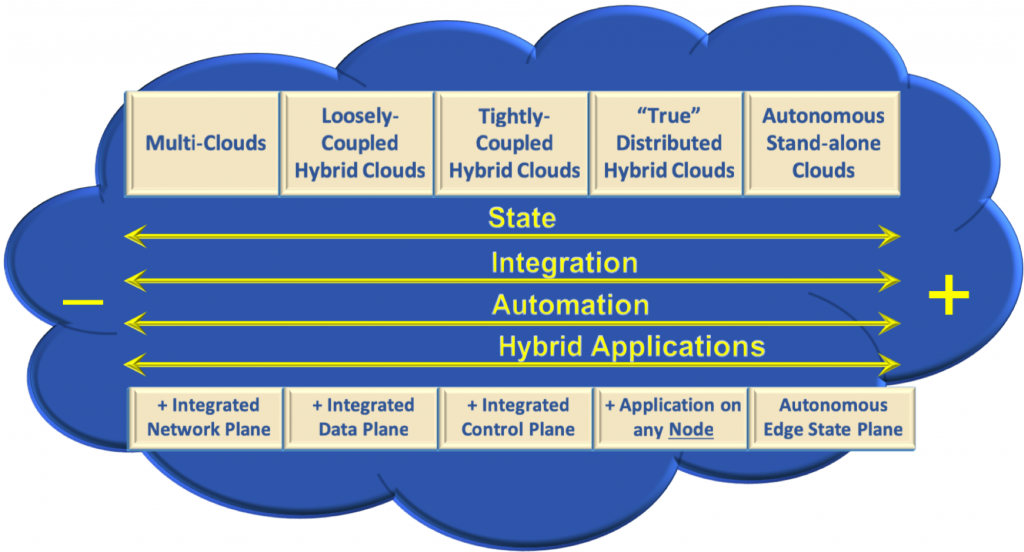
Figure 2: Wikibon’s Hybrid Cloud Technology Taxonomy
Services beats Products
If every element is connected by a powerful combination of network, data, and control planes, will enterprises, then, have to have visibility into the details of every element that they want to treat as a resource? Of course, the answer is no. A real genius of cloud, as perfected by SaaS and IaaS providers, is to render computing as services tied to utilization and not asset title transfers. Initially, those services were very course-grained: application, storage, compute, etc. Today, however, GCP, AWS, Azure, Salesforce, etc., are leading the effort to render computing as a set of fine-grained services that are more easily mapped to business outcomes and acquired through coherent, secure, and performant APIs.
After multiple missteps, GCP finally has competently entered the enterprise market and is catalyzing efforts to coherently move IaaS cloud services closer to business activities, especially in the form of AI and machine learning-related capabilities. But AWS and Microsoft Azure are more than keeping pace. To ensure that cloud service packaging remains simple, all public cloud service providers are beginning to bundle line-item services into logical packages to suit different industries, company sizes, business functions, and strategic computing capabilities (e.g., machine learning pipelines or lifecycles).
The product-to-service transition has been especially hard on industry incumbents and threatens to leave them behind. The businesses of Dell Tech, IBM, Cisco, HPE, and Oracle have been based on product selling for decades. Sales strategies and engineering organizations, in particular, are tied to product revenue, not customer utilization measures. However, somewhat paradoxically, the need to build and keep enterprise sales teams has led AWS, Salesforce, and other public cloud suppliers to begin writing longer-term contracts, effectively pushing some of the transaction costs of deals onto customers. While this reduces the risk of a cloud vendor’s investment in marginal capacity, it does in part offset the strong “as-a-service” packaging advantage of native cloud approaches.
Impacts On Tech’s Incumbent Elite
IBM uses the term “incumbent” to describe the class of business that must execute a transformation to achieve digital business status. It’s a fine term – and in a technology industry context can be applied ironically to IBM and its traditional competitors HPE, Cisco, Oracle, and Dell EMC. These are the US-based incumbent elites in the tech industry that must transform to be more digital and navigate the changes wrought by cloud.
Can they transform and keep up with the cloud leaders? Should users continue to regard the incumbent elites as premier suppliers in the era of digital business powered by cloud? Or has the industry effectively passed them by and it’s just a matter of time before the sun sets on these industry stalwarts?
If performance during the first two phases of cloud evolution is any indication, the incumbent elites are in trouble. While each dabbled in cloud, none executed a committed, all-in cloud strategy. Each made marketing promises, but all ultimately continued to pursue variants of their traditional product and service strategies while arguing the limits of cloud.
However, their behaviors largely reflected the attitude of their enterprise customer core. Now that enterprise customers are putting cloud stakes in the ground – especially multicloud stakes – we should expect the incumbent elites to get serious about cloud – especially multicloud – and that’s what is happening.
Wikibon believes that four rules of the enterprise cloud phase provide an opportunity for the incumbent elite to remain central to enterprise IT strategies and help shape the evolution of cloud, if they focus on adopting cloud-first approaches to business. It will be less hard for some than others, but none of the incumbent elite are a sure bet, despite their enormous presences in enterprise customers.
To “handicap” the five US-based tech incumbent elites, we considered their relative strengths and weaknesses against each of the rules that we think will shape the enterprise phase of cloud. We’re not focused on specific products here, but rather the overall constitution of each vendor’s product and service portfolio. The reason for this is simple: While each of them has an enormous portfolio, each is very diverse. For example, IBM and Oracle each have public cloud offerings, Cisco and Dell EMC (via VMware) strong advanced networking technologies, and HPE (GreenLake) a leading example of an “as-a-service packaging” strategy. Thus, the assessments below rate each incumbent elite relative to each rule, from (1 = very weak) to (5 = very strong).
Cisco
The big public cloud service providers are investing heavily to improve their intracloud networks as a means to sustain scale efficiencies across services, datacenters, and regions. Multicloud networking is a less evident concern for them. But enterprises will require the industry to provide efficient, secure, and agile multicloud inter-networking to ensure simple and reliable application and data integration between SaaS, IaaS, on-premises applications, and the users and devices that increasingly demand more, cheaper, and predictable function.
Cisco has been in a similar situation before. Nearly 30 years ago, minicomputer companies were touting the quality of their proprietary local and campus networking technologies and instructing enterprises that wanted simpler integration to invest in expensive and unwieldly bridging and gateway technologies. Cisco and TCP/IP took the opportunity to flatten enterprise networks, which directly led to the extinction of otherwise strong minicomputer companies. The question here is: Can Cisco do it again in multicloud? Can Cisco leverage enterprise needs for flat, secure, and simple multicloud inter-networking to sustain industry prominence?
In Figure 3, we detail our assessment of Cisco: very strong in multicloud innovation capabilities; weaker overall in as-a-service packaging (although it is very strong in some product areas, like WebEx). We would rate Cisco higher on multicloud innovation, but the company continues to regard data as something that consumes bandwidth, and not as a customer’s essential digital business assets.
Going forward, Cisco should be a market leader in multicloud, and we expect that it will be. However, Cisco’s market behavior sometimes suggests its product groups are more concerned about competing with each other than anyone else. In part, this can be excused: Cisco is an important supplier of networking technology to the big public cloud service providers. Our expectation, though, is that Cisco is accelerating a refocusing on enterprise customers, and that 2020 will be a very big year for Cisco’s overall multicloud portfolio. In our opinion, the tech industry needs Cisco to lead and succeed in efforts to flatten multicloud networking, point the way to blending technologies like Kubernetes, service mesh, and intercloud communications, and establish new standards for multicloud management that translate into new frameworks for multicloud operations.
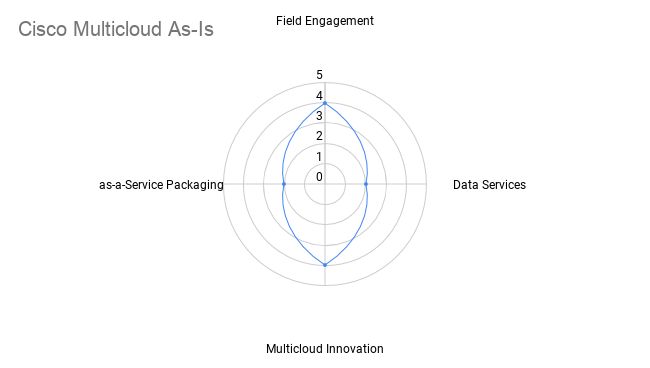
Figure 3: Cisco’s As-Is Multicloud Market Position
Dell Technology
Dell Technology has VMware, which is proving to be the strategic gift that keeps on giving in the cloud market. VMware’s strong partnerships with AWS, GCP, and IBM grant enterprises an essential set of multicloud options and NSX is a sound technical foundation for multicloud inter-networking. Moreover, the company is doing a better job of packaging VMware capabilities with infrastructure products, like the VxBlock 1000 converged infrastructure platform, improving automation, manageability, and seamlessness across the infrastructure portfolio in a multicloud context. VMware is the industry’s best non-public cloud service provider platform for multicloud innovation.
Dell Technology’s other strength is its strong data service heritage. Advanced data storage, data protection, and data management offerings are among the best in the industry. Any user that bets on Dell EMC’s data services portfolio will get the solution it needs today and a foundation for future multicloud needs.
Dell Tech’s greatest weakness is its as-a-service packaging. While certain members of the offering portfolio are offered using a “cloud experience” packaging and pricing model, the majority are not. However, that could change quickly as Dell Technology applies early experience with this approach to broader swaths of its product portfolio.
Going forward, Dell Technology will continue to be a multicloud leader. We think it will parlay its leadership in data services into superior technologies for distributed data operations and automation; it will be essential to defining the multicloud data services plane. One area to watch is the evolving partnership between VMware and AWS. We have always believed that this partnership is and would remain strong, because customers want it to work, and both Dell Technology and AWS are demonstrating a strong commitment to serving enterprise customer requirements. How AWS positions VMware and Outpost will be a crucial clue in the evolution of the partnership.
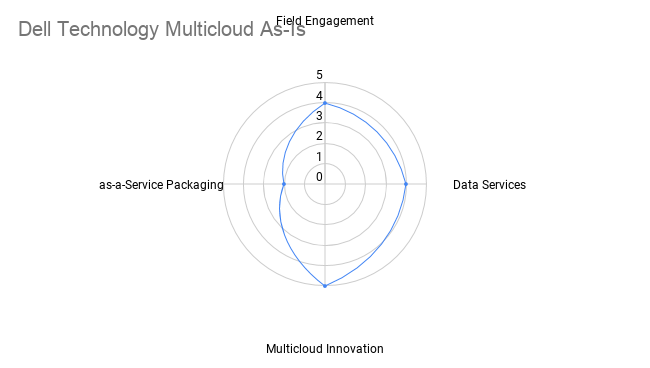
Figure 4: Dell Technology’s As-Is Multicloud Market Position
IBM
IBM remains the thought leader that sometimes fails to successfully commercialize its thoughts. It continues to have the strongest field engagement capability in the technology industry, which cures a lot of strategic ills. However, the company hasn’t been able to turn early commitments to cloud services – like its public cloud platform or Watson AI services – into market leadership.
IBM’s purchase of Red Hat may start to improve IBM’s cloud success rates. The cloud runs on Linux and Red Hat is the strongest supplier of Linux and open source software packaging. But perhaps more importantly, Red Hat should emerge as a superior vehicle to commercialize IBM’s steady stream of technology advances, removing the strictures of a field organization that sometimes is a bit overzealous about utilizing professional services to solve a customer’s IT problems.
Going forward, Wikibon believes that IBM/Red Hat will remain an essential supplier of multicloud technologies. As is the case with Dell Technologies and Cisco, we think a more common, well-thought approach to providing the as-a-Service packaging to customers will be essential to deliver on a complete multicloud experience. We also are encouraged by IBM’s continuing engagement with developer communities, especially as it pertains to advancing data plane and control plane technologies.
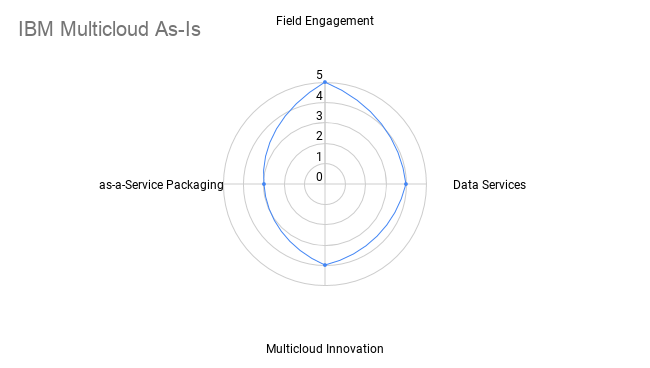
Figure 5: IBM’s As-Is Multicloud Market Position
Oracle
Oracle is a competitive enigma. Based on its early commitment to a leadership “Cloud At Customer” as-a-Service approach to packaging, its strength in SaaS-oriented application clouds, and its database product leadership, Wikibon would expect Oracle to be strolling to multicloud leadership. Indeed, an important segment of users that we talk to suggested early commitments to Oracle’s cloud strategy, but none have followed through. Why?
Oracle’s aggressive field organization and compartmentalized product portfolio are contributing reasons. In our conversations with users, Oracle sales teams often bait with Cloud At Customer, but switch to traditional product sales. Also, users continue to report that an Oracle relationship is a constant negotiation, as features, bundles, and licenses evolve apparently in response to product revenue goals. Finally, Oracle’s relationship with other essential providers of enterprise and multicloud technology ebbs and flows based on any number of leadership or competitive factors. This is a key reason why Oracle hasn’t been able to sustain its relationships with the developer community, despite controlling a number of important open source software programs, like Java. Increasingly, developers want more integrated and simpler cloud-first toolkits that mask infrastructure and management planes, but Oracle keeps shifting cloud allegiances, which puts a burden on developers.
Going forward, Wikibon believes that Oracle’s strength in data services and SaaS will keep it at the fore of customer multicloud strategies. We are particularly encouraged by recent moves with Microsoft that promise leadership multicloud integration across Azure and Oracle clouds. Ultimately, being a leading supplier of enterprise applications means that Oracle will have to remain focused on distributed data services and take concrete steps to ensure that application data security, latency, quality, and manageability remain leadership offerings for its multicloud customers.
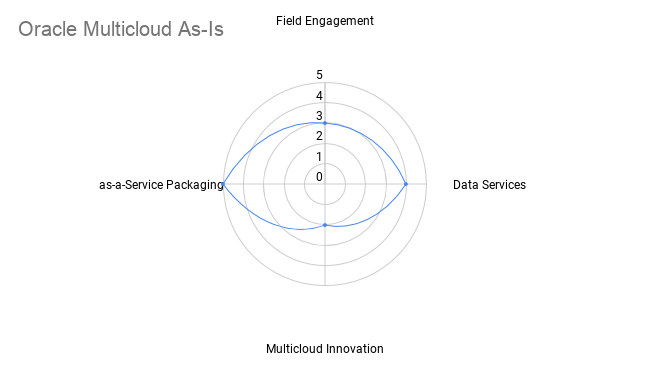
Figure 6: Oracle’s As-Is Multicloud Market Position
HPE
After years of self-inflicted transformations, HPE now faces an externally-driven transformation. Concerns that the company would be too weary to navigate the digital business and cloud transition are misplaced, though. CEO Antonio Neri is providing the leadership shot-in-the-arm that HPE needed, building a management team that appears capable of finally tying its “Invent” promise to enterprise customer multicloud requirements.
HPE’s challenge, though, is that each leadership regime executed different systems of strategic investment, overspending in areas that aren’t contributing to HPE’s multicloud direction, while starving resources in areas that could have been HPE strengths (e.g., storage and data services, cloud management).
Today, HPE appears to be investing in multicloud technology domains that could generate great returns for customers, like OneSphere, Intelligent Data Platform, and its evolving edge computing portfolio. But customers should be certain that HPE’s habit of shifting directions doesn’t impact their multicloud strategies. This is why we aren’t rating HPE higher on “Multicloud Innovation”. HPE’s strategy and plans are first-rate, but significant in scope; HPE has to demonstrate it can deliver.
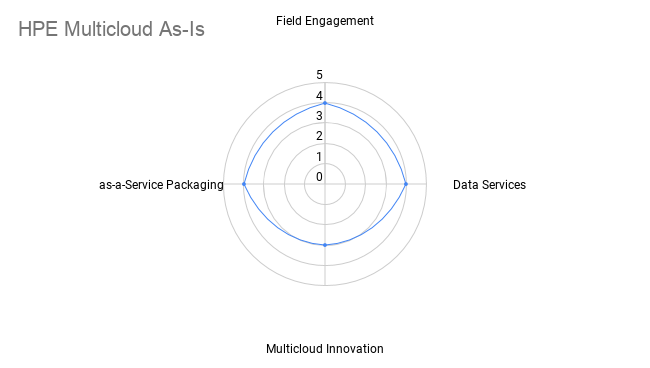
Figure 7: HPE’s As-Is Multicloud Market Position


